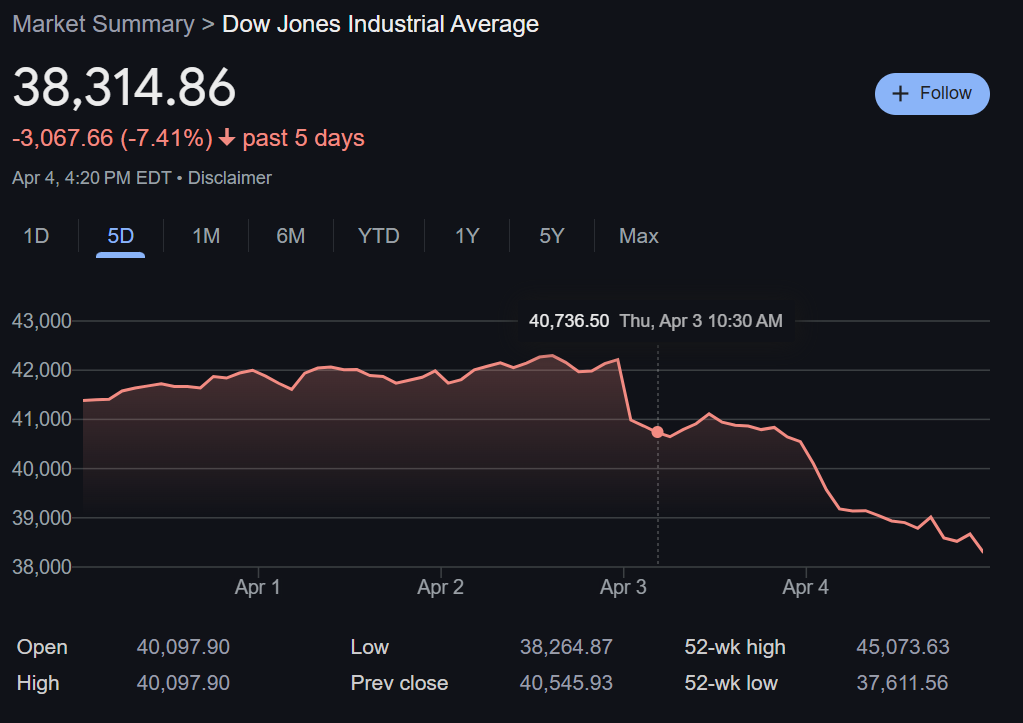April 4, 2025, wasn’t your typical Friday afternoon on Wall Street, not by a long shot. The financial world received a seismic jolt, akin to an electrifying finale to a fireworks display, as the Dow Jones staggered down more than 2,200 points—a jaw-dropping 5.5% decline. Meanwhile, the S&P 500 and Nasdaq weren't spared from the storm, each tumbling nearly 6% as though they were coordinated dancers in a tragic ballet. The catalyst for this financial choreography of despair? China’s newest offensive in trade negotiations—sharp, aggressive tariffs on U.S. imports—that sent Wall Street into a collective tailspin and rippled through global markets like the aftershocks of an earthquake.
But in the midst of this financial frenzy, there’s a quieter symphony playing in a niche yet booming corner of investment—the trading card industry. For those who’ve turned their childhood hobby into a chic, modern-day financial venture, the stock market’s tantrum brings both trepidation and a glimmer of opportunity.
Over recent years, trading cards have sprouted vibrant new wings. Like a rare holographic Charizard magically appearing after decades in storage, the market has transformed dramatically. Trading cards featuring athletic luminaries such as Shohei Ohtani, Aaron Judge, and Mike Trout, along with other iconic rookies, have soared to dizzying heights in value. Nostalgic tokens of a bygone era have metamorphosed into shiny dollar signs—prized investment opportunities drawing everyone from seasoned collectors with an encyclopedic knowledge of stats to enthusiastic newbies swept up in the collector’s fever.
However, Friday's stock market plunge introduces a shadow of doubt into this recently sunny scene. Economic upheaval tends to rewire consumer spending habits in curious ways. As financial panic sets in, people clutch their wallets a bit tighter, and discretionary spending, like cash splashed on the crème de la crème of trading cards, begins to dampen. Anticipate that high-end card demand—the sparkling jewels of this new investment class—may face a do-or-die situation, standing at the precipice of a potential price correction after an exuberant bull run that could make even Wall Street brokers envious.
Conversely, let’s not give in to despair just yet. For within this economic storm, a silver lining materializes. Market volatility tends to unfurl this curious phenomenon where investors, akin to cautious squirrels in autumn, seek shelters for their wealth. Traditional shelters, such as real estate and commodities, have often been historically accentuated but in the contemporary mix, trading cards—those tangible, tangible assets emblazoned with sports legends and cultural icons—may emerge as unlikely "safe haven" candidates.
Rewind the financial history tapes, and you’ll find precedents when during economic stagnation or downturns, rare collectibles and prized memorabilia have maintained, and sometimes even appreciated in value. For the astute investor—eyebrows perpetually raised and calculator always in tow—well-graded, limited-edition trading cards become not just nostalgic treasures but tactical hedges against the volatility that’s upending traditional stock portfolios.
Looking ahead, expect the trading card terrain to oscillate in sync with the broader economic symphony. Collectors and investors, armed with intuition and a keen eye, will need analytical prowess as they navigate these choppy waters. Should these economic tidal waves be but temporary interruptions or herald a more everlasting change in financial climate is a yet to be deciphered mystery. It’s this unknown that sprinkles tantalizing excitement amidst the associated anxiety and keeps the collector community buzzing with speculative delight.
As the dust begins to tentatively settle on Wall Street’s current debacle, expect a raucous ride for trading card enthusiasts. The road ahead promises to be as dramatic and uneven as a poorly shuffled deck, but therein lies the chance for profit, excitement, and yes, more than a bit of good old collector’s luck. Trading card aficionados, like any good poker player, know when to hold ‘em, when to fold ‘em, and when to go all in. Now’s the moment to listen keenly, keep your cards close, and await the next draw. The game is still afoot!
Stock Market Shakes Up Trading Card Industry


Comments